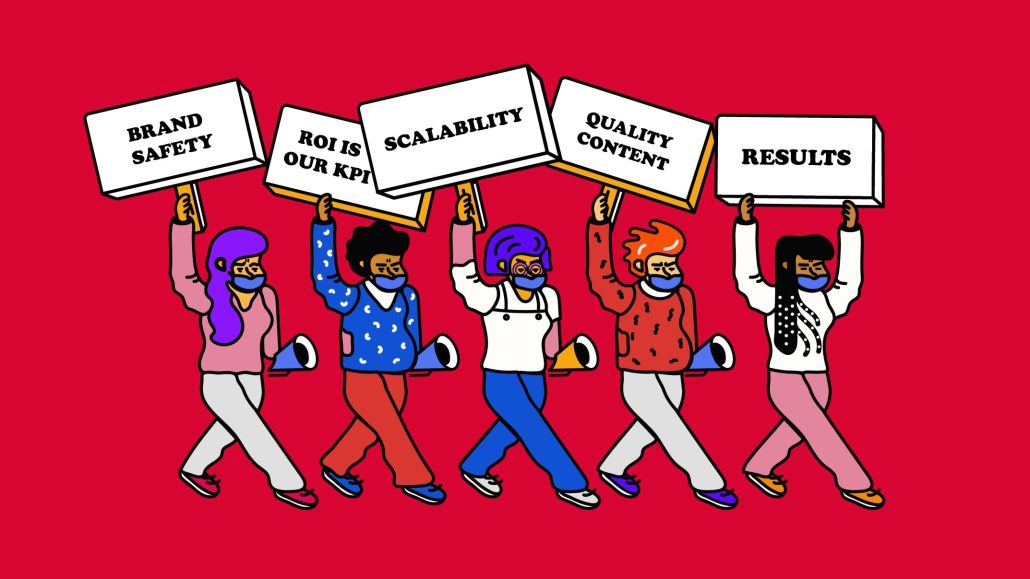- Published on
Brand Safety & Social Media
- Authors
- Name
- Somya Singhal
- @SomyaSinghal06
Brand Safety & Social Media

According to recent research, 75% of businesses had experienced brand safety incidents in the previous year. Due to these instances, over half of those businesses experienced some kind of social media backlash.
Brand safety concerns aren't an "if" in this brand-new world of social advertising; they're a "when". Learn how to reduce the risk to your brand's safety on social media by reading on.
What is Brand Safety?
Companies need to adopt a more moral and ethical posture, as Philip Kotler emphasises in his book Marketing 4.0. The issues we already stated are present here.
For instance, a business can develop brand safety procedures to stop its sponsored advertising campaigns from appearing in material that encourages hate speech or violence.
If this occurs, the typical customer can mistakenly interpret the placement as a recommendation of the material. According to a recent survey, when a brand is associated with objectionable material, 49% of customers feel it has a negative impact on how they perceive the brand.
Social Media and Brand Safety
In 2022, it is expected that social media advertising would increase by 25% and total $137 billion in spending. Potential dangers expand along with the sponsored social game. A wide range of possible dangers to brand safety must be taken into consideration by communication and marketing professionals, including:
- Paid social adverts that are shown next to dangerous or negative material
- material created by users that makes false claims about a brand or product
- Partner marketing scandals involving creators or influencers
Thankfully, social media also functions effectively as a risk identification and mitigation tool. One of the many advantages of social listening is that it allows you to keep an eye on the broader discourse surrounding your business and identify any potential causes of controversy before they get out of hand.
Why should brand safety be a priority for my company?
Brand safety is important since it guards the reputation of your business, particularly on social media. The push of a button gives you access to anything and anything. Your brand's reputation may be fragile given how easily accessible and dynamic social media is.
It takes effort to establish and uphold your reputation, but social media makes it possible for it to all collapse in a matter of seconds. When an advertisement is misplaced or shown with hazardous information, it creates unfavourable connections.
Modern technology is necessary for brand safety in order to prevent the displacement of advertisements. In fact, according to 78% of CMOs, commercials presented in an inappropriate environment can seriously harm a brand's reputation.
How to Make Brand Safety a Priority on Social Media
Because brand safety is crucial, your company has to take action to safeguard your brand. Controlling your advertising can assist you in managing not only your reputation but also the perception of your brand. To adopt brand safety, consider the following recommendations:
Choose a point of contact for concerns about brand safety
Everyone must take responsibility for brand safety. However, when it's time to implement a crisis response plan, you should only have one or two individuals in charge.
Establish who is in charge of determining incoming threats and the response required. Once it has been selected, socialise the post within your organisation. That way, an employee will know exactly who to call if they come across a possible brand safety problem.
Describe a plan of action
Even the most avoidable crises can appear arbitrary when it occurs. Your team will be able to work swiftly and effectively as they address stakeholder issues with the help of an actionable response strategy.
Identify the steps to be taken in the case of a brand safety issue and create a crisis management strategy. Include instructions on how to share public apologies as well. People will probably check your social media accounts for updates on how your business is reacting.
Policy on Social Media
Your company's reputation is safe and secure when you establish a social media policy for your business. Legal hazards, duties, the brand's vision, voice, and privacy should all be understood by your staff. Include corporate personnel to keep them more aware of the reputation of your brand.
Sensitive classification algorithm
Another tool rates websites according to the sensitivity of the material they cover. This strategy focuses on age analysis in order to specifically address this problem. The system conforms with these defaults and the manager may choose which categories are to be regarded as sensitive.
Conclusion
As this article has shown, brand safety is essential in the modern world. Organizations are becoming more aware of this and taking steps in that regard. Following trends and taking safety measures to protect your company's branding are thus matters of competition.
Just no department should be in charge of preserving a brand's reputation. Every employee in your business should have the tools necessary to prevent any potential brand safety incident in its tracks. Brand safety is of the highest importance, despite the fact that social media advertising is a current requirement. An advertising would not be associated by a viewer with an unrelated issue, trend, news, etc.
After all, a positive reputation leads to effective positioning, which results in sales. A negative reputation threatens the viability of the company.